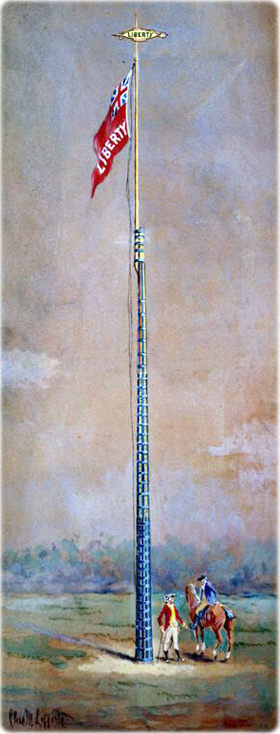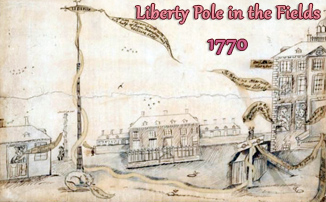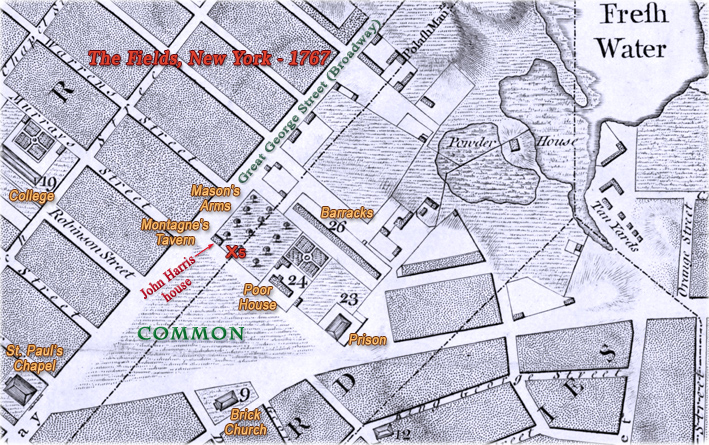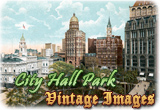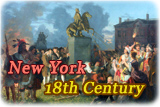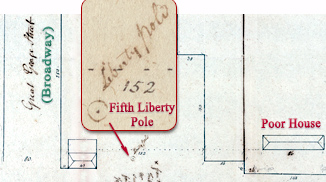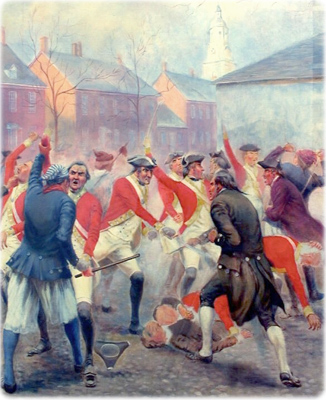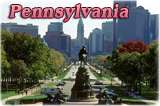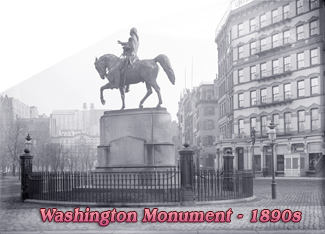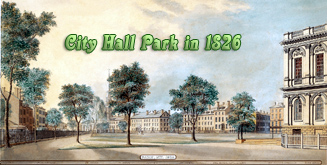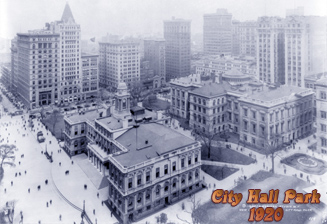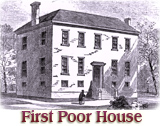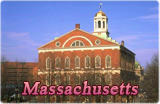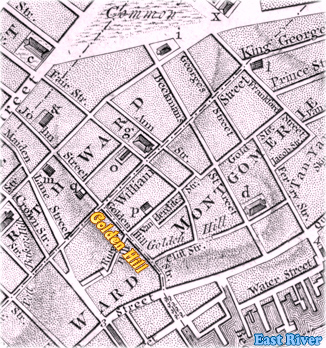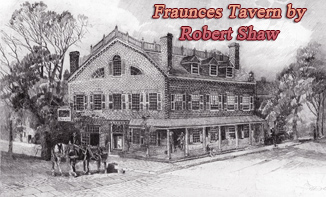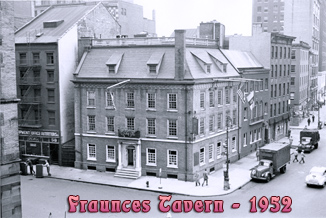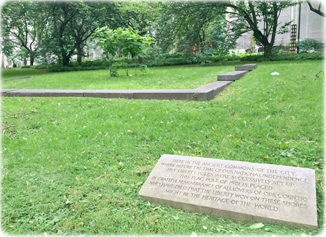In the City of New York, five
Liberty Poles were erected as monuments of freedom, between 1766 and 1770, in
two sites close together in the Fields, present-day City
Hall Park. Those were pre-revolutionary times and tensions,
between patriots and loyalists, sometimes led to violent confrontation.
Liberty pole is a historical symbol known since the Roman Empire, when a liberty pole was erected after the assassination of Julius Caesar. A few liberty poles were erected in the American British colonies in the years before and during the War of Independence (1775-1783).
In New York City, rebellions followed the Stamp Act in 1765, when a mob was organized by the Sons of Liberty. The Governor’s carriage was burned, the house of Royal Artillery Major Thomas James, at Vauxhall, was ransacked and his possessions burned, in addition to other acts of protest that took place in the City.
On May 20, 1766, news of the repeal of the Stamp Act, on March 18, spread through New York. The City bells were set to ring.
According to Stokes (Iconography of Manhattan Island, ... 1915), next day, on May 21, 1766, the first "Flag Staff", later known as "Liberty Pole", was noted as being on the Common while the celebration of the repeal of the Stamp Act was being observed. It was probably erected on this or the preceding day. There was a large board fixed on the pole with the inscription "George 3rd, Pitt — and Liberty", as referred by Captain John Montresor (1736-1799), Chief Engineer of the British Army (Montresor Journals, 1882). Contemporary references to this flag staff as a “pine post” or “mast” suggest that some old vessel may have been dismantled for this festive purpose.
Handbills with text signed by William Pitt (1708-1778), then a member of the British Parliament, who opposed the Stamp Act, later Prime Minister, were spread around the city on May 21, reading: "On the glorious Occasion, of a total Repeal of the Stamp-Act, there will be a general Meeting, and Rejoicing at the House of Mr. R. Howard. The Lovers of their Country, loyal Subjects to his Majesty George the Third King of Great-Britain, and real Sons of Liberty, of all Denominations, are hereby cordially invited to partake of the essenital & long look’d for Celebration. The City will be illuminated, and every decent Measure will be observed, in demonstrating a sensible Acknowledgement of Gratitude to our illustrious Sovereign, and never to be forgotten Friends at Home and Abroad, particularly the Guardian of America."
Some sources wrongly indicate the erection date of this first Liberty Pole as June 4, the King's birthday, when its celebration and "Rejoicings for the Authenticated arrival of the Repeal of the Stamp Act" were blended in one festival. According to Stokes, this error may possibly be traced to a misstatement in the Post-Boy of August 14, where its erection was connected with the “public Rejoicing on his Majesty’s Birth Day”.
This first Liberty Pole was cut down on August 10, 1766, by British soldiers quartered in the Barracks. According to Montresor, next day, "A considerable mob assembled on the Common consisting of 2 or 3000 chiefly Sons of Liberty, headed by Sears in order to come to an Explanation with the Officers and Soldiers for Cutting down a pine post where they daily exercised, called by them the Tree of Liberty. These Sons of Liberty used the most scurrilous and abusive language against the officers and soldiers present who never seemed to resent it, till a volley of Brick Bats ensued and wounded some, upon which they defended themselves with their Bayonets until an answer could arrive from the General. ... The Governor Sir H Moore never Interfered".
The second Liberty Pole was raised on August 12, 1766, by the Sons of Liberty with "George, Pitt and Liberty’ and hoisted a large ensign thereon (Montresor Journals). It was cut down on September 23. "The Mast or Flag Staff on the Common", ..., was cut down again. “The authors of this Insult are not yet certainly known, but some particular Persons are suspected" (N.Y. Post-Boy, September 25).
The next day, on September 24, 1766, the third Liberty Pole was erected on the Common. It was found cut down on March 19, 1767, in the morning.
The fourth Liberty Pole was erected in the same place, on the same day, March 19, 1767. It was cased below with Iron. "The same Night attempts were made both to cut it down, and to undermine and dig it down— but without Effect. On Saturday Night, the 21st. there was an attempt to destroy it by Gunpowder, by boring a hole, and charging it with Powder, but this also fail'd.— Next Night Sunday — a strong Watch was set by the Citizens, at an adjacient House [John Harris house]; a small Company of Soldiers in the Night appeared with their Coats turn'd, arm'd with Bayonets & Sticks, but no Guns. — Some of the Watch went out, ask'd who they were and their business? But received no satisfactory Answer: They then drew up before the Door where the Watch was kept, but after a few Words thought proper to retire. On Monday about 6 in the Evening, a party of Soldiers march'd by the Post, and as they passed by Mr Bardin's Tavern [later Montagne's] fir'd their Muskets, two of which were pointed at the House; next Morning it was found that a Ball had been fired thro' the House, and another into one of the Timbers. On Tuesday about 1 o'Clock in the Afternoon, the same party as it is supposed, took a Ladder from a new Building, which they carried to the Barracks, and were from thence proceeding towards the post — but being seen by an Officer he stop'd and turn'd them back — and notice of this Behaviour of the Soldiers, getting to the Governor and General and the Magistrates of the City, — we hear strict Orders were immediately given and effectual Measures taken to prevent Disturbance, or any the like future Occasion of it; since which all has been quiet, and we hope this Matter, in itself trivial, and only consider'd as of Importance by the Citizens, as it shew'd an intention to offend & insult them, — will occasion no farther Disturbance" (N.Y Journal, March, 26, 1767).
On January 13, 1770, Saturday night, British soldiers tried to blow up the Liberty Pole in the Fields. They saw the braces, bore a hole in the pole and filled it with powder, but the attempt was discovered by someone at Montagne's tavern (west side of Broadway), then some gentlemen, standing near Montague's house, insulted the soldiers, then they invaded the tavern with drawn swords and bayonets, beat the waiter and destroyed many things in the tavern.
In response, a broadside, dated January 15 and signed "Brutus", was addressed to the public. The subscriber states that "Every Man of Sense amongst us knows that the Army is not kept here to protect, but to enslave us; and notwithstanding our Assemblies have given vast Sums of Money to provide them with such Necessaries which many of the good Burgers want". He protests the employment of soldiers in other tasks and, by the end of his broadside, he adds: "All Friends to Liberty that incline to bear a Testimony against a literal Compliance with the Mutiny Act, [otherwise called the Billeting Act] are desired to meet at Liberty-Pole, at Twelve o'Clock," (on January 17), "where the whole matter shall be communicated to them".
But the British soldiers did not wait for that deadline. After four unsuccessful attempts to cut down the 4th Liberty Pole, it was eventually cut down on January 17, 1770. They took shelter in a ruined building nearby (probably the old John Harris house) and took advantage of the night, and at one o'clock they cut down the Pole, sawed and split it in pieces, and carried them to the Montagne's door, where they threw them down (N.Y. Post-Boy, February 5, 1770).
On January 17, 1770, about two to three thousand people attended Brutus's call in the Common. They discussed the granting of money in compliance with the "Billetting Act". They resolved not to employ any soldier under any condition, and that in the future any soldier who behaved in an insulting manner would be treated as enemies to the peace of the City (N.Y. Post-Boy, January 22, 1770).
The reply, also a broadside from the 16th Regiment of Foot, quartered in New York, attacked the Sons of Liberty, calling them "real enemies to society" and acting as though their freedom depended upon “a piece of wood”. They said the Liberty Pole was destroyed without the assistance of the Army.
On January 19, 1770, the hostility between soldiers and activists culminated in the armed confrontation in Golden Hill (John Street since 1794), Manhattan. It began when Isaac Sears and Walter Quackenbush attempted to stop soldiers from posting their broadside at the Fly Market. Mayor Whitehead Hicks ordered the soldiers to go to their barracks and people followed them until more soldiers appeared on Golden Hill. No deaths were reported, but there were injuries on both sides. Six weeks later British soldiers killed five people in Boston, of a crowd of a few hundred, who were harassing them.
On January 30, a letter was addressed to Mayor Hicks, signed by Jacobus van Zandt, Isaac Sears, Joseph Bull, Joseph Drake, and Alexander McDougal asking to raise another Liberty Pole, suggesting two possible places on the Common: the first one, on the same place as the fourth Pole, the second, near St Paul's Church, a small distance from where the two roads meet. "If the Board Should not think proper to Grant Liberty for its Erection, on either of the above places, ..., no monument of freedom will appear in the Fields (the most publick place) the people are Resolved to procure it a place in the Fields on private Ground, and as the pole will be finished in a few days we are appointed a Committee to wait on you to request that you would be pleased to Quicken an answer from the Corporation on this Subject". The mayor communicated this letter to the common council on February 2, and the request was denied by a vote of nine to six. According to the N.Y. Journal (February 8), the petition was rejected, not because the board was out of sympathy with the project, but because "it was thought the former Allowance was sufficient; and ... tho' the Corporation did not now give their Consent, which, if they had done, might have been thought by some making themselves Parties in the Act, yet ... they would not have objected, or been displeased, if the Pole had been erected without any fresh Application to them".
On February 3, 1770, the Sons of Liberty printed another broadside, where they announced "feeing we are debarred the Privilege of public Ground to erect the Pole on, we have purchased a Place for it near where the other stood, which is full as public as any of the Corporation Ground. Your Attendance and Countenance are desired at Nine o'Clock on Tuesday Morning the 6th Instant, at Mr. Crommelin's Wharf, in order to carry it up to be raised." Isaac Sears had purchased, that same day, the one-twelfth share of the John Harris property that the Common Council had not acquired after Harris death. That was the oldest house built on the Common. This small piece of land was near the site of the fourth Liberty Pole (location on map above right).
On February 6, 1770, a fifth Liberty Pole was erected by Isaac Sears and his peers on the plot he bought. A letter from the Sons of Liberty about the ceremony was published in the N.Y. Journal, on February 8: "a hole was dug 12 Feet deep, and a large Pitch Pine Mast erected. The Mast was strongly cased round with Iron Bars, laid length wise, riveted thro' with large flat Rivets and laid close together, so as entirely to cover the Mast for about two thirds of its Length, and over these Bars were driven Iron Hoops, near half an Inch thick at small Distances, from Bottom to Top. On the upper Part, the Bars were not laid quite so close, but riveted and hooped in the same manner, and the Wood between the Bars driven as full of large Nails as it would hold. It was drawn through the Streets from the Ship-yards, by 6 Horses, decorated with ribbands, 3 Flags flying, with the Words Liberty and Property, and attended by several Thousands of the Inhabitants. It was raised without any Accident, while the French Horns played, God save the King. It was strongly secured in the Ground by Timber, great Stones and Earth, and is in Height above the ground, about 46 Feet; on the Top of it was raised a Top Mast of 22 Feet, on which is fixt a Gilt Vane, with the Word Liberty. No Sort of Disturbance happened during the whole Affair. The Gentlemen of the Army had taken a laudable Care that not the least offence should be given by the Soldiers, many of whom, were present, and neither gave nor received any Affront".
On March 24, 1770, British soldiers attempted to carry off the top-mast and vane of the Liberty Pole, but were frustrated by a few men. The Chapel bell rang and the soldiers retreated.
The Revolutionary War began in earnest on April 19, 1775, at the Battles of Lexington and Concord, Massachusetts. In New York, the Sons of Liberty seized control of the powder house near the Collect Pond (map above). The Continental Army was formed on June 14, 1775 and the next day George Washington was appointed commander in chief. By that time, the British forces had left New York, patriots built barricades and batteries. The Common was used for military parade. In April 1776, the Continental Army occupied Manhattan. On July 9, 1776, Washington read the Declaration of Independence in the Common, near the Liberty Pole. After a major defeat in the Battle of Long Island, August 27, 1776, the American forces retreat from Manhattan. On September 15, 1776, British forces under General William Howe landed on Manhattan and took over the City.
The fifth Liberty Pole was quietly taken down on the morning of October 28, 1776, on Governor Tryon's recommendation to the inhabitants. The men who took down the Pole later supped at Montagne's Tavern without paying. On September 16, 1780, John Amory announced in the Rivington’s Royal Gazette: "The Gentlemen who supped at the late Widow de la Montagnie’s on the 17th of September [October 28], 1776, (after taking down the Liberty Pole) are informed in this public manner that their bid [bill] for the supper and liquor still remains unpaid; if the iron that was about the Pole remains unsold, the subscriber will recommend a purchaser, and if the bill is not paid very soon, the subscriber will be under the necessity of publishing the names of the gentlemen that supped on that occasion".
On September 3, 1783, the Treaty of Paris was signed, officially ending the war. On November 25, 1783, the British troops evacuated Manhattan. On December 4, 1783, General George Washington took leave of his officers of the Continental Army to say farewell in the Long Room of Fraunces Tavern.
Sears conveyed his interest in the plot, where the fifth pole was erected, to the City on October 19, 1785. Isaac Sears died the following year and the City paid for his site, in 1789, in the form of a bond from the City to Sears, assigned to Thomas Ten Eyck.
In the 19th century a few other liberty poles were erected in New York as remembrance of these monuments of freedom raised in the 18th century. In 1812, for example, a stadium opened on the northeast corner of Broadway and Prince Street, advertised in the New York Gazette (August 24) as near the Liberty Pole. On May 13, 1822, the Common Council granted a petition to remove the Liberty Pole "at present standing in the Fifth Ward, corner of Church and Leonard Sts., to the triangular plot at the junction of Chapel and Provoost Sts." On September 24, 1827, the Common Council permitted the erection of a Liberty Pole at the corner of Sixth Avenue and 5th Street (Minutes of the Common Council). On February 22, 1834, A liberty pole, 137 feet high, was erected by the Democratic Party on the southwest corner of West Broadway and Franklin Street. It was destroyed by lightning the following year and soon after another one was erected, which remained in the place until 1858, when it was in "too advanced a state of decay" and a new one, 187 feet high, was erected in the same place (N.Y. Times, December 10, 1858). On October 16, 1834, the Common Council permitted the erection of a liberty pole in the Forth Ward. On June 16, 1837, a liberty pole at the corner of Houston and Allen streets, in front of Hawkins’ Tammany Branch Hotel, was destroyed by lightning (Evening Post, June 17).
In 1918, the Society of Tammany, or Columbian Order, erected a 150 feet high Liberty Pole in Union Square, to celebrate the Fourth of July. It was a pole the Tammany Society owned and used in the early days of the Republic, in the City Hall Park at its Fourth of July ceremonies. World War I ended the following November.
A replica of the fifth Liberty Pole was set up on June 10, 1921, in its original location in the City Hall Park, which was based on the Gerard Bancker's Plan, 1774. It was gift of the Sons of the Revolution and the New York Historical Society. The Mayor and Faith Brown, daughter of Henry Collins Brown, member of the New York Historical Society' s committee, helped to put the pole in place. A box was placed at the base of the pole containing historical papers about the events. This Liberty Pole was dedicated on June 14, the Flag Day, with a gray granite marker. An estimated 10 thousand people attended the ceremony after a parade that started at Fraunces Tavern.
